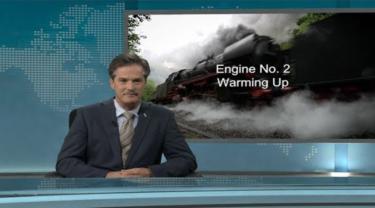Europe seems overshadowed these days by the center stage drama going on in the US. Raise Europe in casual conversation, and it elicits a picture of messy public finances, bad banks, schismatic politics and sluggish growth. Doomsayers have long since pegged Europe as the lead in the boots of the global economy, destined for “sluggish-at-best” future growth, and generally emblematic of the underwhelming performance of the world’s richer lands. Are they right, or is something changing?
What is evident is that the answer really matters. Europe packs a mighty punch in the global economy. Its long-run potential growth – estimated by some as low as 1.1 per cent – still pulls along 22 per cent of global GDP, just 2 per cent less than the US economy. Knock it down and large parts of the global economy are also reeling. Europe’s growth-struggles over the past decade have definitely not gone unnoticed, with Asian economies often lamenting the weakness of European demand as one of their greater concerns. Well, that’s about to change. The US economy has for some time been firing up and pulling the rest of the world along. Engine No 2 is now warming up very nicely, and will soon be doing some pulling on its own. How can we tell?
Increasingly, key European indicators are impressing economy-watchers. Let’s start on the business side of things. Excluding construction, industrial production in August zoomed to its highest level in a decade, and the trend of the past year is more rapid than at any point following the immediate post-recession phase. Isolate manufacturing, and it’s doing even better. The August level fell just shy of the pre-recession peak, after a scorching one-year run-up.
It doesn’t stop there. Through October, buyers in European firms were in an increasingly bullish mood about both current and near-future prospects. The Markit Purchasing Managers’ Index for manufacturing hit 58.6, well ahead of the growth/decline mark. The corresponding services indicator remained close to a cyclical high in October, a sign of economic stabilization. Not surprisingly, business sentiment is running high. The Industrial Confidence Indicator produced by the EC is at a new record high for the series, a remarkable achievement given the long history of this indicator. The volume of orders has seen a particularly dramatic rise in the past 18 months.
Perhaps even more inspiring is the recent rise in construction confidence. This is one that typically takes a longer time to rise, as increased activity uses up spare capacity in the system before needing more. We have long felt that there is a large pile-up of pent-up demand for construction of new production facilities in Europe, but it now seems to be translating into action. Sentiment in Europe’s construction sector is up remarkably in the past two years, and is continuing to rise. It is responding to capacity conditions, which are rapidly tightened, and recently hit a new post-stimulus-period high.
So much for business; how about the more substantial consumer story? Hiring activity has been strong enough to drive Europe’s area-wide unemployment rate down close to cyclical lows. It’s not there yet, but the rapid descent is once again raising fears of labour shortages and escalating wages – a very good problem to have, compared to some of recent history’s more pressing woes. As such, Europeans seem to be in spending mode. The most recent flash estimate of consumer confidence has pushed it to a post-recession high, hopefully a sign that the average person is re-emerging as a force in the economy that portends well for near-term growth.
Forecasters are paying attention. European growth beat expectations by a long shot this year, and chances are very good that 2018 will be no different. Large institutions – notably the IMF and the OECD – are revising their forecasts upward, a rare about-face in recent times. With the new CETA agreement, the timing could hardly be better for Canadian exporters. The turn of events has raised key questions about the appropriateness of current ECB policy – for a change, a good problem to have.
The bottom line?
Europe – global economic engine number two – is finally firing up. This has to be some of the best news the world economy has heard in a long, long time. Economies everywhere will soon be feeling the positive effects.





